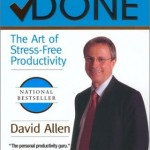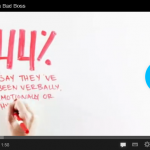 Goodwill, intangible assets, and the right culture
Goodwill, intangible assets, and the right culture
When a company is acquired, most often the amount the buyer pays for it is far superior to the value of its tangible—physical and financial—assets. Goodwill is, technically, an intangible asset, one coming into play only during acquisition. Other intangible assets, however, are continuously present on a company’s balance sheet and are included in its overall market valuation. Moreover, these assets constitute the lion share of this valuation. According to Baruch Lev from New York University, for U.S. publicly traded companies, the ratio of intangible to tangible assets is 5:1 (although, for some companies this ratio is below 1 where the value of their intangible assets erodes their market value). In his text, Prof. Lev describes the four bases for intangible assets (“Intangible assets: Concepts and measurements,” 2005).
- Services and knowledge-embedded products. The latter includes software, but also drugs, computers and machine tools. “Intangible and intangible-intensive products and services generally emanate from the discovery and learning process of companies.”
- Customer relations. Loyalty to a company’s brand allows the company to charge higher prices or secure a larger market share. Such loyalty “is secured and enhanced by unique and continuously improved products/services, coupled with extensive promotion, advertising, and cultivation of customers.”
- Human resources. “Unique human resource policies and practices… which consistently enhance labor productivity and reduce employee turnover.”
- Organizational capital. “Unique corporate organizational designs and business process that allow companies to outperform competitors in generating revenues or by economizing on production costs.”
We are not big fans of “human resource” concepts—humans are beings, we believe—but this disagreement aside, we are heartened to see how right leaders, such as Bob Davids, are who believe that a CEO’s No. 1 job is to build the right culture. This means creating an organizational environment and relationship-oriented culture in which everyone is free and responsible for taking the best action for the company. We called this environment “Freedom Inc” (also F-form). Bob Davids and many other leaders we have studied also believe (and proved) that when the culture is right, the benefits and company’s valuation follow.
And how can they not? Free and responsible employees who continuously take initiative drive discovery and improvement. This leads to great services and products. This also leads customers becoming more and more loyal. No wonder the intangible-to-tangible assets ratio in these companies is not 5:1—it’s much higher.








Great post! Nice!